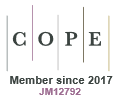CP25049Root morphology and phosphorus requirements of 12 tropical pasture species grown in a controlled environment
Tropical pasture species are often established in phosphorus-deficient soils that receive little fertiliser input. Five grasses and seven legumes were grown to investigate differences in root morphology and phosphorus requirements. Shoot yield and phosphorus acquisition varied significantly among the species, generally because of differences in the development of root length. There were also differences in critical phosphorus requirements. Improvements in the productivity of low-input tropical pasture swards may be achieved by establishing species that have longer roots that confer better phosphorus acquisition.
This article belongs to the collection: Australian Grasslands Symposium 2025 ‘Seeds of Change’.
CP25049 Abstract | CP25049 Full Text | CP25049PDF (1.5 MB) | CP25049Supplementary Material (521 KB) Open Access Article





